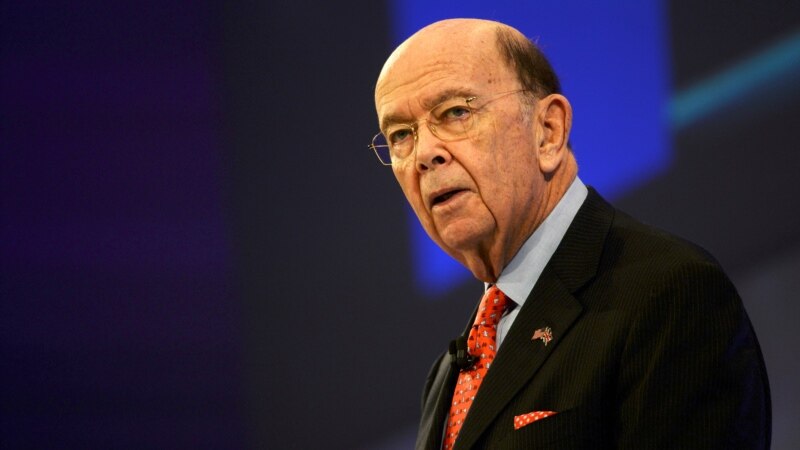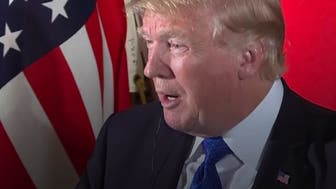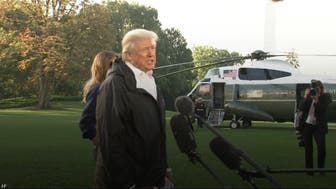

Uh, notice a problem there, guys? You can’t compare across countries without adjusting for population. A country with more people, all else equal, will have both more guns and more mass shootings, driving a false correlation between the two.
They get to the adjusted data about halfway through the piece. It’s true that the U.S. and Yemen are the countries with the most guns and the most shooters — and that is something that could, plausibly, suggest that easy access to guns increases mass shootings. But also worth noting is that there’s no pattern visible for the entire rest of the data set. Gun ownership varies from basically nonexistent to above 30 guns per 100 people, yet these variations don’t obviously correspond to variations in mass shootings.


There are a few other issues with the piece worth pointing out, in no particular order:
 Their mass-shooting numbers and much of their analysis — including a claim that gun ownership correlates with mass shootings even after the U.S. is excluded and overall homicide rates are taken into account — come from the researcher Adam Lankford, who has refused to share information about his analysis with media outlets likely to criticize him.
Their mass-shooting numbers and much of their analysis — including a claim that gun ownership correlates with mass shootings even after the U.S. is excluded and overall homicide rates are taken into account — come from the researcher Adam Lankford, who has refused to share information about his analysis with media outlets likely to criticize him. In one paragraph, they claim that more gun ownership means more “gun murders,” but two of the four sources they link document gun deaths including suicide.
In one paragraph, they claim that more gun ownership means more “gun murders,” but two of the four sources they link document gun deaths including suicide. We shouldn’t care about “gun murders” or “mass shootings”; we should care about murders in general and mass killings in general, regardless of how they’re accomplished. (Up to a point it’s essentially tautological to claim that more guns translates to more problems with guns, because a society with no guns by definition cannot have any problems with them.) As I’ve noted numerous times before, there is no simple, consistent correlation between gun ownership and murder or homicide rates in general, either among developed countries or among U.S. states. More sophisticated studies face a variety of serious methodological obstacles — I don’t find any of them that compelling — and have reached varying conclusions. The research on mass shootings in particular is in an even more primitive state.
We shouldn’t care about “gun murders” or “mass shootings”; we should care about murders in general and mass killings in general, regardless of how they’re accomplished. (Up to a point it’s essentially tautological to claim that more guns translates to more problems with guns, because a society with no guns by definition cannot have any problems with them.) As I’ve noted numerous times before, there is no simple, consistent correlation between gun ownership and murder or homicide rates in general, either among developed countries or among U.S. states. More sophisticated studies face a variety of serious methodological obstacles — I don’t find any of them that compelling — and have reached varying conclusions. The research on mass shootings in particular is in an even more primitive state. They claim that the U.S. has more lethal crime than other developed countries but not more crime in general, and argue that guns are the difference. Even if we take the initial claim at face value, in blaming guns we encounter the problem that, as Steven Pinker once put it, “If you subtract out all the gun homicides in the United States and you just look at the homicides committed with, say ropes, candlesticks, and daggers, we still kill people at a higher rate.” I went through various reasons for our high rate of lethal violence here.
They claim that the U.S. has more lethal crime than other developed countries but not more crime in general, and argue that guns are the difference. Even if we take the initial claim at face value, in blaming guns we encounter the problem that, as Steven Pinker once put it, “If you subtract out all the gun homicides in the United States and you just look at the homicides committed with, say ropes, candlesticks, and daggers, we still kill people at a higher rate.” I went through various reasons for our high rate of lethal violence here.I wouldn’t purport to know for a fact that gun ownership doesn’t lead to higher homicide or mass-shooting rates, but the effects are far more complicated and subtle than gun controllers want us to believe.

4:28 PM 11/7/2017 – The Root Causes of Mass Shootings in the U.S.: In my opinion:
If you admit as the hypothetical explanatory option the hostile special intelligence operation nature of the mass killings, and it is impossible not to consider this scenario as an, if not the (in majority of cases) explanation, then all the sociological and the statistical studies become irrelevant, just as the gun ownership explanatory theory, which is indeed false, in my opinion. This latter factor might be contributing but not the root cause, and not the main causal factor in the modern-day U.S. culture.
Michael Novakhov
11.7.17
P.S.: But the good thing is that we started to ask these questions and started to look for the answers. We should not let the conceptual stereotypes to cloud our judgment. One of such stereotypes, regarding “Al Qaeda”, started to crumble before our eyes: “21 Years of War with Al Qaeda?” “ISIS”, probably is next.
It looks like the beginning of the end of the historical denial. So much for the powers of the very plausible self-deception: “I do not see it, because I do not want to see it”, just like the good old three monkeys.
Links:
-
Root causes of Mass Shootings in the U.S.
-
NYT Shows How Not to Analyze Mass-Shooting Data – National Review
________________________________
National Review |
NYT Shows How Not to Analyze Mass-Shooting Data
National Review Some colleagues sent me the New York Times article “What Explains U.S. Mass Shootings? International Comparisons Suggest an Answer” today. My jaw just about hit the floor when I saw the chart that appears at the top of the piece, above everything else … Where the guns used in Chicago actually came fromWashington Postall 58 news articles » |
Los Angeles Times |
A mass shooter’s name is part of the story; concealing it is silly and self-important
Los Angeles Times As anyone who has taken a high school journalism class knows, one of the 5 Ws that reporters should be careful to include in the first paragraph of a news story is “who.” Usually that means providing the name of the newsmaker, whether his actions are … |
The good news is that communities have proven resilient when attacked. The bad news is that this week—with calls for “extreme vetting” and denigration of our criminal justice system as a tool against terror—we saw dangerous backsliding instead of a renewed focus on the work needed for the next phase in the war on terror.
How should we respond to this latest terror act on our soil? Rather than demagoguing on immigration, launching divisive political attacks, or disparaging our criminal justice system, we should focus on what works. Effectiveness should be our lodestar. Russia is not the only one who wants to weaken the United States by sowing division in our country—the terrorists want to do so as well. We shouldn’t let them.
When tragedy and terror strike we must deliver swift and certain justice consistent with the rule of law. While it appears cooler heads have prevailed to reverse the President’s initial impulse to send the New York attacker to Guantanamo (an unprecedented and legally dubious move), the fact that we found ourselves having the debate yet again about “war” vs. “law enforcement” in the terror fight prompted disturbing déjà vu. Dedicated professionals across two administrations worked hard to ensure that this country can apply all tools—military, intelligence, law enforcement, diplomacy, financial sanctions—to disrupt threats and hold terrorists accountable. For terrorists caught on U.S. soil, we have relied on a criminal justice system that is the envy of the world not only because it is the hallmark of our rule of law society but also because it gets results.
The record is clear when it comes to generating intelligence, securing convictions and safely holding terrorists. The more than one million federal, state, and local law enforcement officers who work in that system put their lives on the line to keep us safe are anything but a “laughing stock.” To the contrary, they include more than 30,000 FBI agents, intelligence analysts and other professionals who I was proud to call colleagues when I served as Chief of Staff to then FBI-Director Robert S. Mueller. This nation is also served everyday by dedicated federal prosecutors who are no “joke.” That includes those in the Southern District of New York who, true to their tradition of independence, tuned out the political talk and moved swiftly to charge the New York attacker. It was precisely the need for intelligence-driven criminal prosecutions of terrorists and spies that led to the creation of the Justice Department’s National Security Division which I was privileged to lead during the Obama Administration. These elements of our post 9/11 architecture—solidified over both Republican and Democratic Administrations—have brought justice in hundreds of terrorist-related cases since 9/11.
Contrast that approach with the (hopefully short-lived) impulse to send Saipov to Guantanamo on the theory that we’re at war (we are) and he’s an enemy (he is) and enemies don’t get lawyers (not quite). The Supreme Court has determined that Guantanamo Bay, where a detainee has the right to challenge his detention, is not lawyer-free zone. And while a bipartisan effort reformed military commissions in 2009 to maintain a prosecution tool for terrorists caught on a hot battlefield, they have proven anything but swift and certain. In 15 years, the military commissions have delivered just eight convictions or guilty pleas and several of those have been overturned or invalidated. The 9/11 and U.S.S. Cole bombing victims and their families are still waiting for justice today.
Justice would not be served by sending Saipov to Guantanamo. Nor would it serve the goal of generating intelligence and understanding how Saipov came to plow down pedestrians on Halloween afternoon. Saipov reportedly has talked to FBI agents and told them that he consumed ISIS propaganda prior to his attack. Understanding more about how and when he became radicalized is critical to stopping future attacks. But the surest way to keep that from happening would be to interrupt the FBI interrogation and ship Saipov to Guantanamo.
It is dangerous pre-9/11 thinking to suggest that the FBI can’t act in this case—as it has in so many others since 9/11—to obtain intelligence from a terrorist in custody. In fact, the FBI can immediately question terrorists—without giving Miranda warnings—to identify other threats and plots. In 2011 when Congress was considering a mandatory military custody law for terrorist captures here or abroad, the FBI was right to argue that such a mandate would interrupt their intelligence gathering process by turning a terrorist over to the military where he could challenge his military detention with the benefit of a lawyer. Sure enough, in case after case where the FBI has moved quickly to gather intelligence and then bring a prosecution in our courts, terrorists have pled guilty or received lengthy sentences in the highest security Federal prisons. And importantly the FBI has been able to generate intelligence that led to the capture of other terrorists (Just ask Christmas Day bomber Umar Farouk Abdulmutallab). We need this intelligence now more than ever in order to understand how Saipov was radicalized and how someone might have intervened in time to stop him.
It appears that Saipov did not slip through the vetting system, but instead may fall into the more-common category that DHS described in March of this year when it concluded that most foreign born, US-based terrorists are radicalized after they arrive. At the moment, we have a rare opportunity, having taken Saipov into custody alive. As NYPD Deputy Commissioner John Miller said, Saipov followed the ISIS playbook “to a tee” by weaponizing a vehicle and leaving a note to brag about it. This breed of terrorist poses a significant challenge to law enforcement and we should strive to learn as much as we can about Saipov’s path to radicalization.
In response to this challenge, we should reject impulsive responses in favor of what works. Recycling campaign chants of “extreme vetting” and pulling the plug on the Diversity Visa Program which reportedly allowed Saipov entry in 2010 is a distraction; he reportedly was radicalized years after he entered the United States. To be clear, we should support strong and thorough vetting for anyone who wants to enjoy the rights and benefits of this country. Such vetting, regardless of specific program, should be refined based on threat intelligence. This is why following the Paris attacks in 2015, the DHS strengthened the visa waiver program to respond to the threat from foreign fighter returnees who may have traveled to join ISIS in Syria and Iraq but held European passports eligible for visa-free travel to the United States. The future of the Diversity Visa Program might be a reasonable topic for debate, but based on what we know now is in no way related to the tragedy on the Westside Highway.
Rather than creating distractions and issuing blanket travel bans, our vetting process should respond to the actual threats we face. We should be building trust in communities we need to identify future threats, not alienating and marginalizing them. Let’s focus on working with social media companies to stop abuse of their platforms. Let’s work to strengthen relationships with our international security partners.
Sixteen years after 9/11 we face a different type of threat. In response, we should emulate the best we’ve seen from this country. We should model resilience and support, and we should reject politics in favor of pragmatism. We must summon the best in our communities, in our government and politics, and rely on that which makes us different from every other country in the world: the rule of law and our justice system. Anything less allows terrorists to divide us.

Has the United States been at war with al-Qaeda for 21 years? During the most recent 9/11 military commission hearing at Guantanamo Bay, the prosecution finally articulated its view of when the U.S. and al-Qaeda entered into an armed conflict. According to the prosecution, that putative armed conflict began more than 21 years ago, on August 23, 1996, the day Osama bin Laden, the founder of the terrorist group, published a fatwa calling for attacks on Americans. The government characterized this fatwa as a declaration of war:
We do believe that the ’96 document written by [Osama] bin Laden, who was the head of al-Qaeda at the time he wrote it, is a declaration of war.
The prosecution apparently staked out this astonishing position, at odds with history, law, and the U.S. government’s interests outside of the 9/11 military commission, to satisfy its short-term litigation goal of preserving the military commission’s personal jurisdiction over the 9/11 defendants.
The Military Commission Act grants military commissions personal jurisdiction over “alien unprivileged belligerents.” The Act defines those as individuals who are not U.S. citizens, who are not privileged belligerents, and who either (1) engaged in hostilities against the United States or its coalition partners; (2) purposefully and materially supported hostilities against the United States or its coalition partners; or (3) were a part of al-Qaeda at the time of the alleged offense. All three categories of individual over whom a military commission may have personal jurisdiction must have some connection to hostilities—which the MCA defines as “any conflict subject to the laws of war.” (The timing element of the third category implicates hostilities through §950p(c), which limits offenses triable by military commission to those “committed in the context of or associated with hostilities.”) Hostilities, in turn, are defined as any conflict subject to the laws of war. Thus, the military commission has personal jurisdiction over the 9/11 defendants only if they were connected to an armed conflict between the U.S. and al-Qaeda prior to September 11, 2001.
Since May 2017, the 9/11 military commission is working its way towards a pre-trial, evidentiary hearing on personal jurisdiction. It was in the context of a preliminary hearing addressing what if any witnesses should provide testimony as to personal jurisdiction that Judge Pohl pressed the prosecution for a specific date on which the armed conflict with al-Qaeda began. The government’s response—August 23, 1996—was intended to ensure that the 9/11 military commission could proceed. Unfortunately, that position carries with it significant ramifications implicating state sovereignty—the oldest rule in international law—and fundamental applications and consequences of the law of armed conflict.
It is axiomatic that only states may bring about the legal state of war or, in modern terms, armed conflict, through an act of speech. Historically, the law of war applied to situations of declared war between states. When the 1949 Geneva Conventions established the modern framework for armed conflict that rests primarily on objective indicators of conflict rather than political declarations or determinations, the drafters retained the notion of declared war between states—but only for conflicts between states. Thus, international armed conflicts—armed conflicts between two or more states—may arise upon a declaration of war alone or through the use of armed force between two states. In contrast, non-international armed conflicts——armed conflicts between states and non-state actors (or among non-state actors)—only exist when non-state actors are sufficiently organized and violence between the parties is sufficiently intense. Whereas Common Article 2, which invokes the full panoply of the Geneva Conventions, applies only to interstate war and may be triggered merely by a declaration of war, Common Article 3 applies alone in the event of “an armed conflict not of an international character.” The drafters of the Geneva Conventions simply made no provision for a non-international armed conflict to be triggered by means of a declaration of war.
In fact, the drafters of the Geneva Conventions intentionally excluded a declared-war trigger for non-international armed conflict. Common Article 3 reflects a careful balance: recognizing that conflicts between states and non-state actors may rise to a level of violence comparable to that of interstate armed conflict, while also accommodating states’ desire to minimize international legal regulation intruding on their internal affairs. This bargain reflects states’ aversion to conferring the sort of legitimacy or legal status on non-state actors that could challenge states’ sovereignty, including by implicitly recognizing their belligerent or insurgent status.
Thus, the final clause of Common Article 3 includes a disclaimer: “The application of the preceding provisions [Common Article 3] shall not affect the legal status of the Parties to the conflict.” Jean Pictet’s authoritative Commentary on the Geneva Conventions specifically attributes the provision’s origin to a desire to “prevent the [non-state] party from basing a claim for recognition as a regular Government on the respect it had shown for the Convention,” as required in the original Convention draft. His explanation of Common Article 3 attributes much of its evolution from its initial proposal to its final form to states’ concerns about legitimizing criminal entities.
“There was also a risk of common or ordinary criminals being encouraged to give themselves a semblance of organization as a pretext for claiming the benefit of the Conventions, representing their crimes as ‘acts of war’ in order to escape punishment for them. A party of rebels, however small, would be entitled under the Conventions to ask for the assistance and intervention of a Protecting Power. Moreover, it was asked, would not the de jure Government be compelled to release the captured rebels as soon as the troubles were over, since the application of the Convention would place them on the same footing as prisoners of war?”
Pictet concluded that without the disclaimer, Common Article 3 would not have been adopted. “It meets the fear—always the same one—that the application of the Convention, even to a very limited extent . . . may confer belligerent status, and consequently increased authority, upon the adverse party.”
The same concerns over extending legitimacy to non-state actors persists today. Indeed, the United States has never ratified Additional Protocol I precisely because it had the potential to “give recognition and protection to terrorist groups” by extending the law pertaining to international armed conflicts to certain non-international armed conflicts. In transmitting his decision not to seek ratification of Additional Protocol I, President Ronald Reagan explained to the U.S. Senate that the application of the full panoply of international humanitarian law to armed non-state actors who do not otherwise comply with the law of armed conflict could legitimate the aims and the practices of terrorist organizations.
Nevertheless, solely in order to extend the military commissions’ jurisdiction over the 9/11 defendants, the government has chosen to legitimize bin Laden and al-Qaeda by placing them on the same legal plane as states, stating last week that:
. . . [O]ur position has always been under international law, when you have international armed conflicts, a declaration of war is sufficient alone [to trigger the law of armed conflict].
. . . .
If we were to declare war on another country today, the law of war would apply from the second we declared war. And that’s really what we are talking about. We are talking about when did the hostilities begin so we know when the law of war took over. And clearly our position has always been that we believe it began in 1996 with [Osama] bin Laden’s declaration . . . .
The military commission prosecution evidently believes that, as a matter of law, an individual or a non-state actor may, through its speech alone, unilaterally bring about a legal state of armed conflict. If the military commission were to credit the prosecution’s position, it would preserve the military commission’s jurisdiction and save the prosecution the trouble and difficulty of demonstrating the existence of a non-international armed conflict prior to 9/11. Unfortunately, the consequences of that inexplicable position are not limited to whether the 9/11 military commission may go forward.
According bin Laden’s 1996 fatwa the legal effect of a declaration of war implies that in 1996 al-Qaeda had the characteristics of a state actor. International law normally limits statehood only to those entities that are able to exert effective control over a definite territory and population, engage in international relations, and garner recognition. But none of this was true of al-Qaeda in 1996. Three months before issuing his fatwa, bin Laden and al-Qaeda were evicted from Sudan and dispossessed of their enterprises there. At the time, al-Qaeda boasted as few as several dozen members. And, seven months later, the Taliban—who by then exerted actual effective control over the territory where bin Laden resided—forced bin Laden to relocate to Kandahar from Nangarhar, where he originally established himself in Afghanistan after fleeing Sudan.
The prosecution’s position imbuing al-Qaeda with state-like powers undermine U.S. interests outside of this military commission in at least five ways. First, it undermines the lawfulness and legitimacy of the U.S. war of self-defense against Afghanistan in the aftermath of 9/11. If al-Qaeda were a state or something akin to a state in 1996, then by implication Afghanistan and the Taliban did not so much host al-Qaeda as surround it, as if it were an enclaved state. Under the prosecution’s view, therefore, the Taliban could not be responsible for surrendering bin Laden following the 9/11 attacks, and the United States’ ultimatum to hand him over would have been unreasonable: how could a de facto government with only partial control of its own territory be responsible for curtailing the actions of an enclaved sovereign? Consequently, if the prosecution were right that al-Qaeda was the equivalent of a state actor, the invasion of Afghanistan could be viewed as a misdirected and illegal aggressive war.
Second, the prosecution’s position necessarily suggests that the armed conflict between al-Qaeda and the United States is an international armed conflict—as opposed to a non-international armed conflict—invoking the full panoply of the laws of war. This position also means that al-Qaeda members were the regular armed forces of a state, meaning that members of al-Qaeda could make a colorable claim to combatant immunity and prisoner-of-war (POW) status. At the very least, all of those currently detained and accused of prior membership in al-Qaeda should have been treated as POWs until they received an Article 5 hearing. (Ammar al Baluchi, for example, has requested, but never received, an Article 5 hearing.) The prosecution’s position in the 9/11 case legitimizes attacks by members of al-Qaeda on U.S. soldiers and military infrastructure, narrowing the scope of criminality associated with al-Qaeda attacks. For example, according to the prosecution’s view, the attack on the U.S.S. Cole would remain perfidious but the sailors killed and the vessel targeted would be lawful military targets—and the charge of terrorism would be a mere restatement of the object of war: violence intended to coerce a political result.
Third, if the prosecution position prevailed, al-Qaeda would have enjoyed belligerent rights and the benefit of the laws of neutrality. Neutrality of non-belligerents is automatically triggered by the existence of a state of war between belligerents. Neutrals must remain neutral—that is they must not assist one belligerent party against the other. But belligerents must also refrain from conducting hostilities on the territory of neutral states, a fundamental protection for neutrals and against the spread of war. For example, the application of neutrality as a result of the prosecution’s position would mean that the U.S. violated Sudan’s neutrality along with its sovereignty by bombing the al-Shifa pharmaceutical facility in Khartoum in 1998.
Moreover, and outside of the immediate concerns relating to al-Qaeda, the government’s position suggests that declarations of war by non-state actors are a fast-track to sovereignty. The consequences of this implication may be far reaching. There are numerous entities that have substantially stronger claims to statehood than did al-Qaeda in 1996, but that remain outsiders in the international system. Would entities like Somaliland, the Turkish Republic of Northern Cyprus, Abkhazia, and others finally gain admittance to the international system by declaring war on a neighbor or a far-off foe unlikely to take notice?
Finally, the government’s position leaves unsettled how to differentiate non-state declarations of war that have legal effect from those that do not. The U.S. has been the target of numerous supposed declarations of war by violent non-state actors to which it accorded no legal effect. For example, the United States treated neither the Symbionese National Liberation Army nor the Weathermen as enemy belligerents. Similarly, why give bin Laden’s August 1996 fatwa the legal weight of a declaration of war but not al Qaeda’s earlier 1992 fatwa that likewise called for attacks on U.S. forces in Saudi Arabia?
The only conclusion that can be drawn from the prosecution’s astounding position that bin Laden’s fatwa actually caused a legal state of war with the U.S. is that the government is willing to contort the law of armed conflict to suit its short-term litigation goals. Unfortunately, its single-minded and short-sighted effort to patch up the broken 9/11 military commission is simply making wreckage of law and history—and proving the old adage that hard cases make bad law.
The opinions and views expressed are those of the author alone. They do not represent the views of the US Department of Defense or the US Government.
Image: Getty Read on Just Security »

What Doesn’t: Crime, Race or Mental Health
If mental health made the difference, then data would show that Americans have more mental health problems than do people in other countries with fewer mass shootings. But the mental health care spending rate in the United States, the number of mental health professionals per capita and the rate of severe mental disorders are all in line with those of other wealthy countries.
A 2015 study estimated that only 4 percent of American gun deaths could be attributed to mental health issues. And Mr. Lankford, in an email, said countries with high suicide rates tended to have low rates of mass shootings — the opposite of what you would expect if mental health problems correlated with mass shootings.
Whether a population plays more or fewer video games also appears to have no impact. Americans are no more likely to play video games than people in any other developed country.
Racial diversity or other factors associated with social cohesion also show little correlation with gun deaths. Among European countries, there is little association between immigration or other diversity metrics and the rates of gun murders or mass shootings.
A Violent Country
America’s gun homicide rate was 33 per million people in 2009, far exceeding the average among developed countries. In Canada and Britain, it was 5 per million and 0.7 per million, respectively, which also corresponds with differences in gun ownership.
Americans sometimes see this as an expression of deeper problems with crime, a notion ingrained, in part, by a series of films portraying urban gang violence in the early 1990s. But the United States is not actually more prone to crime than other developed countries, according to a landmark 1999 study by Franklin E. Zimring and Gordon Hawkins of the University of California, Berkeley.
Rather, they found, in data that has since been repeatedly confirmed, that American crime is simply more lethal. A New Yorker is just as likely to be robbed as a Londoner, for instance, but the New Yorker is 54 times more likely to be killed in the process.
They concluded that the discrepancy, like so many other anomalies of American violence, came down to guns.
More gun ownership corresponds with more gun murders across virtually every axis: among developed countries, among American states, among American towns and cities and when controlling for crime rates. And gun control legislation tends to reduce gun murders, according to a recent analysis of 130 studies from 10 countries.
This suggests that the guns themselves cause the violence.
Mass Shootings Happen Everywhere
Skeptics of gun control sometimes point to a 2016 study. From 2000 and 2014, it found, the United States death rate by mass shooting was 1.5 per one million people. The rate was 1.7 in Switzerland and 3.4 in Finland, suggesting American mass shootings were not actually so common.
But the same study found that the United States had 133 mass shootings. Finland had only two, which killed 18 people, and Switzerland had one, which killed 14. In short, isolated incidents. So while mass shootings can happen anywhere, they are only a matter of routine in the United States.
As with any crime, the underlying risk is impossible to fully erase. Any individual can snap or become entranced by a violent ideology. What is different is the likelihood that this will lead to mass murder.
In China, about a dozen seemingly random attacks on schoolchildren killed 25 people between 2010 and 2012. Most used knives; none used a gun.
By contrast, in this same window, the United States experienced five of its deadliest mass shootings, which killed 78 people. Scaled by population, the American attacks were 12 times as deadly.
Beyond the Statistics
In 2013, American gun-related deaths included 21,175 suicides, 11,208 homicides and 505 deaths caused by an accidental discharge. That same year in Japan, a country with one-third America’s population, guns were involved in only 13 deaths.
This means an American is about 300 times more likely to die by gun homicide or accident than a Japanese person. America’s gun ownership rate is 150 times as high as Japan’s. That gap between 150 and 300 shows that gun ownership statistics alone do not explain what makes America different.
The United States also has some of the world’s weakest controls over who may buy a gun and what sorts of guns may be owned.
Switzerland has the second-highest gun ownership rate of any developed country, about half that of the United States. Its gun homicide rate in 2004 was 7.7 per million people — unusually high, in keeping with the relationship between gun ownership and murders, but still a fraction of the rate in the United States.
Swiss gun laws are more stringent, setting a higher bar for securing and keeping a license, for selling guns and for the types of guns that can be owned. Such laws reflect more than just tighter restrictions. They imply a different way of thinking about guns, as something that citizens must affirmatively earn the right to own.
The Difference Is Culture
The United States is one of only three countries, along with Mexico and Guatemala, that begin with the opposite assumption: that people have an inherent right to own guns.
The main reason American regulation of gun ownership is so weak may be the fact that the trade-offs are simply given a different weight in the United States than they are anywhere else.
After Britain had a mass shooting in 1987, the country instituted strict gun control laws. So did Australia after a 1996 incident. But the United States has repeatedly faced the same calculus and determined that relatively unregulated gun ownership is worth the cost to society.
That choice, more than any statistic or regulation, is what most sets the United States apart.
“In retrospect Sandy Hook marked the end of the US gun control debate,” Dan Hodges, a British journalist, wrote in a post on Twitter two years ago, referring to the 2012 attack that killed 20 young students at an elementary school in Connecticut. “Once America decided killing children was bearable, it was over.”
Continue reading the main story
The Sad, Lonely Men Behind America’s Mass Shootings
<a href=”http://CatholicPhilly.com” rel=”nofollow”>CatholicPhilly.com</a>–5 hours ago
In-Depth–San Francisco Chronicle–16 hours ago
No, Mr. President, It Is ‘a Guns Situation’
It’s not Muslims, Mexicans or immigrants making the US unsafe – it’s …
Domestic violence is a link among most mass shooters — but …
Thoughts About Mass Murder
Why High-Profile Events Like Mass Shootings Often Don’t Lead To …
<a href=”http://TAPinto.net” rel=”nofollow”>TAPinto.net</a>–Oct 18, 2017
What Explains US Mass Shootings? International Comparisons …
<a href=”http://Chron.com” rel=”nofollow”>Chron.com</a>–18 hours ago
Blog–The Guardian (blog)–Nov 6, 2017
Week after bombshell, George Papadopoulos largely remains a …
Blog–<a href=”http://Aljazeera.com” rel=”nofollow”>Aljazeera.com</a> (blog)–Nov 4, 2017
Prima Donna from Point Piper: Joan Sutherland interview – archive …
Royal Opera House 2017-18 Preview: How Joan Sutherland …
The Washington National Opera Tries Valiantly to Make Alcina An …
Share this story on NewsBlur
Manipulating history for political ends is not unusual — see the Trump administration and the Civil War. But in Russia, invoking history has long been a way of proclaiming political or ideological affiliation. The “Great October Socialist Revolution” was the founding myth of the Soviet Union; Nov. 7 (Oct. 25 on the old Russian calendar), the date of the uprising that brought the Bolsheviks to power, was the national holiday, on which tanks, missiles and high-stepping soldiers swept through Red Square.
The history of the revolution — and of the czarist past, and for that matter of the entire world — was written to fit the myth of Soviet Russia as the vanguard of civilization, and woe to those who tampered with the official version. Unless they were the guardians of the official version, to whom it fell now and again to rewrite and update that history — like when Stalin went abruptly from demigod to footnote.
The end of the Soviet Union in 1990 set history adrift. The collapse of a totalitarian dictatorship that had overthrown an absolute monarchy forced Russians to confront a painful task of choosing what to glorify, what to condemn, and what to gloss over. Impassioned debates over what role of “liberalism,” “democracy” or “elections” might have had a century ago are really about today.
Those who pine for a powerful state, President Vladimir Putin among them, have come to blame Lenin for the territorial costs he incurred for quitting the war with Germany and to credit Stalin with putting it together again (until it was dismantled anew by Mikhail Gorbachev and Boris Yeltsin). The last czar, Nicholas II, is alternately seen as a weak master who either foolishly allowed the autocracy to founder or who failed to ride with a democratizing tide. The Russian Orthodox Church has canonized him as martyr of an idealized, God-fearing past.
The fall of Communism is the onset of freedom for some, the collapse of empire for others, and simply irrelevant to many Russians under 35, who, according to public opinion polls, simply don’t know much about 1917.
Continue reading the main story
Early Monday, the very first charges were issued in special counsel Robert S. Mueller III’s investigation into possible coordination between the Trump campaign and Russia. Three former Trump campaign officials were indicted in the probe: Trump’s former campaign manager Paul Manafort, and two lesser-known Trump associates Rick Gates and George Papadopoulos. So what are the details […]






















